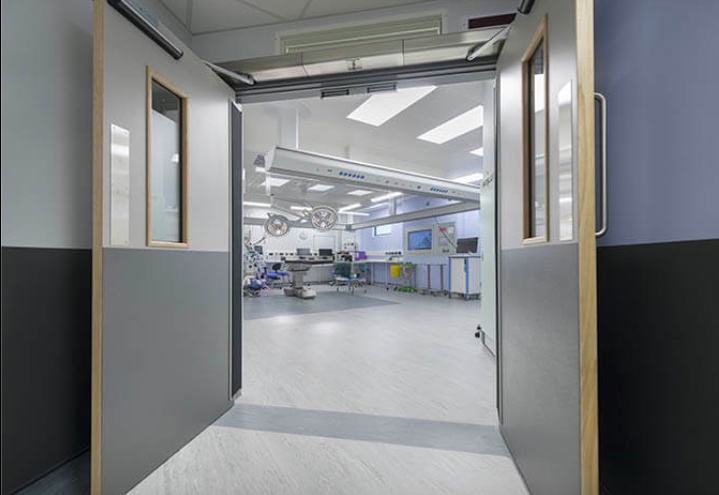Every business, idea, or model has weaknesses regardless of how well-developed its plan is. But just because something has a weak point doesn’t make it a poor or unideal business, idea, or model. Having a weakness simply means that the product or model has room to improve and innovate to be a better one.
Over the last decade, almost every industry has introduced innovative and modern solutions to people’s changing demands. In the construction industry, the marketing and development of modular properties like temporary healthcare buildings increased in the last decade. After all, many businesses need extra spaces that are more affordable and quicker to build than traditional buildings.
Many of us might only have heard about temporary buildings recently, but they’ve been around since 1837. Even though temporary and modular building construction has a lot of preferable points, there are points that the market could perceive as disadvantages. Here are seven weak points of marketing temporary healthcare buildings that could stop people from choosing them.
1 - The word “temporary” immediately diminishes people’s perception towards it
‘Temporary’ is both the unique and weak point of a temporary healthcare building. Unfortunately, many perceive the word “temporary” more negatively than positively. Many forget that temporary and modular buildings aim to provide immediate solutions to space needs.
One way to avoid this if you’re marketing a temporary healthcare building is to use phrases and words that support the positive meaning of “temporary.” You can do so by adding taglines that positively describe that temporary healthcare buildings are the best solution for space needs.
2 - People negatively associate container homes with temporary and modular properties
In many places, people perceive container properties negatively. Since businesses use container boxes to transport goods, people correlate them with factories immediately. It’s best to share informative facts about them to help people avoid interchanging temporary buildings with container homes.
Of course, you should not negatively market container homes just to make temporary properties look better. You just have to educate and share with your audience what makes temporary properties different from container homes. You can start by highlighting the differences in their uses, materials, and construction processes.
3 - People might think it’s not ideal for healthcare use, especially for patients with critical conditions.
Since many people correlate temporary buildings with container homes and are unfamiliar with them, they think they’re unideal for healthcare use. Sadly, many are unaware of how beneficial temporary healthcare buildings were during the high of the pandemic.
If you notice that many people are against using temporary buildings for healthcare, you can share articles and studies on their importance during the pandemic. When you use articles and news about temporary healthcare buildings, it’s best to share those facts informatively. That way, people can digest how efficient temporary buildings are for emergencies, especially healthcare.
4 - People view portability negatively when it comes to construction
People are always after quality when it comes to infrastructure. But since the ultimate purpose of temporary buildings is for immediate space solutions, people think of their portability as a weakness that makes their quality less. Since many are foreign with modular properties, they think they’re like tents that you can easily move.
Yes, some temporary buildings are portable, but you’ll need the construction company to handle that for you to transport the property properly. To avoid this, it would be helpful to share with people the process of transporting temporary properties.
5 - Only a few businesses are using temporary healthcare buildings currently
Another weak point of marketing temporary healthcare buildings is that only a few businesses are using them currently. On the brighter side, since many are still unfamiliar with them, it’s also an opportunity for temporary building companies to market them innovatively.
Today, many healthcare businesses and schools use temporary and modular buildings in the U.K., U.S., and Australia. However, modular construction might still seem foreign and nonexistent in other countries. It could be a disadvantage because people will need to understand first how they’ll need it and its efficiency.
6 - Temporary healthcare buildings are not as effective in maintaining heat as traditional buildings
The primary materials used for modular and temporary properties are wood, steel, and cement. Most temporary properties use timber, which is not as efficient at maintaining heat compared to cement. It’s a disadvantage since wood has a lower thermal conductivity than concrete and steel.
It could be a struggle, especially in four-season countries. Using temporary healthcare buildings for patient use in healthcare facilities should be re-evaluated because it might not be the best option, especially if the building uses timber.
7 - Its lifespan might push people away from considering it
Last but not least is its lifespan. Even though they’re called “temporary,” temporary healthcare buildings could last for decades. However, it takes thorough maintenance to ensure that it will last. Of course, many healthcare businesses are only opting for modular buildings for temporary use, but for others, this could still be a disadvantage.
That’s why it’s essential to also address its weaknesses and answer them positively so people will understand their uses better.
These weak points don’t make temporary healthcare buildings unideal, but realistic and true to their purposes.
These weak points don’t mean that opting for temporary healthcare buildings is a poor choice. These weak points show that temporary and modular buildings cater to specific needs and purposes that provide immediate space solutions. That’s why before you opt for one, make sure you’ll use it accordingly and expect it to provide you with quick solutions for space concerns and nothing more than it can provide.
About the author:
Bianca Banda is a writer for Flex by MTX, a privately owned construction and engineering company that relentlessly champions the use of Modern Methods of Construction for social, economic, and environmental good.


No comments yet